Search results for: 'mit'
-
 Große verzierte bronzezeitliche Schale
Große verzierte bronzezeitliche SchaleFein gearbeitete Schale aus roter Keramik, umlaufende Verzierung, perfekt erhalten. Durchmesser 14 cm, Höhe 5 cm.
Price: on request Scarab with geometric motive
Scarab with geometric motiveThe lower side exhibits wrapped cords. A nice example of Egyptian art during the Second Intermediate Period. This scarab is described in the catalogue of Irène Gautier-Vodoz.
Price: on request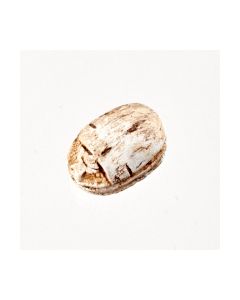 Scarab with lotus motive
Scarab with lotus motiveAncient Egyptian amulet seal with beautiful motive. Six lotus flowers are forming volutes. This scarab is described in the catalogue of Irène Gautier-Vodoz.
Price: on request Scarab with sphinx and Maat
Scarab with sphinx and MaatThe piece from the Ramesside period shows the goddess of truth and justice. Next to her is a name, probably that of pharao Mencheperre, who is famous as Thutmosis III.
Price: on request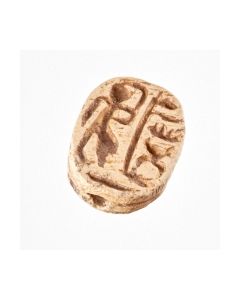 Scarab with cartouche
Scarab with cartoucheThe scarab from the late Ramesside period shows a standing person. A cartouche in front bears the name of pharao Mencheperre, who was famous as Thutmose III.
Price: on request Scarab with magic spell
Scarab with magic spellThe hieroglyphs are of the so called anra design, a magic spell in the ancient Egyptian belief. The scarab is from the 13th to 15th dynasty. It is described in the catalogue of Gautier-Vodoz.
Price: on request Scarab with geometric motive
Scarab with geometric motiveThe motive exhibits two symmetry axes and at least six triangles. A wonderful artistic expression of the highly evolved Egyptian maths. This scarab is described in the catalogue of Irène Gautier-Vodoz.
Price: on request Scaraboid from the Middle Kingdom
Scaraboid from the Middle KingdomThe stamp shows hieroglyphs with a title for the king of Upper and Lower Egypt. This scaraboid is described in the catalogue of Irène Gautier-Vodoz.
Price: on request Cowroid with Ankh and papyrus
Cowroid with Ankh and papyrusThe seal is engraved with the breath of life between two papyrus plants. This scaraboid is described in the catalogue of Irène Gautier-Vodoz.
Price: on request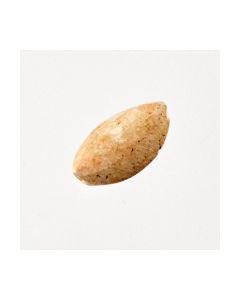 Cowroid with magic spell
Cowroid with magic spellThe hieroglyphs of the anra type are to be interpreted as magical formula. From the Second Intermediate Period of ancient Egpyt. This scaraboid is described in the catalogue of Gautier-Vodoz.
Price: on request Keramikschale, Lausitzer-Kultur
Keramikschale, Lausitzer-KulturPreiswertes Schälchen aus der nordeuropäischen späten Bronzezeit bis frühen Eisenzeit. 1200 v. Chr. bis 500 v. Chr.
Price: on request Spear head from famous Guttmann collection
Spear head from famous Guttmann collectionMassive, perfectly preserved piece, beautiful patina. Inventory number "AG 167c" from famous Axel Guttmann collection in shaft.
Price: on request Seltenes Gefäß aus der Bronzezeit
Seltenes Gefäß aus der BronzezeitSehr fein gearbeiteter bronzezeitlicher Becher aus roter Keramik, Höhe 9 cm.
Price: on request Verzierte bronzezeitliche Schale
Verzierte bronzezeitliche SchaleFein gearbeitete Schale aus intensivroter Keramik, umlaufende Verzierung, Durchmesser 13.5 cm.
Price: on request Opulent Late Bronze Age brooch
Opulent Late Bronze Age broochStunning large brooch dating to the Urnfield period. The museum quality piece is decorated by spirals and stylized water birds. 1200 to 800 BC.
€31,800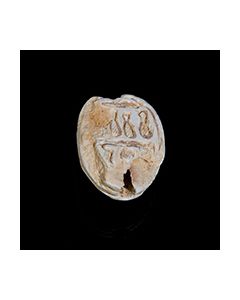 Ägyptischer Skarabäus
Ägyptischer SkarabäusSehr schön gearbeiteter Körper, ca 1000 v.Chr., 21. Dynastie, Dritte Zwischenzeit. Der Stempel ist in 2 Register geteilt. Das obere Register zeigt 3 Vasen, das untere ist teilweise beschädigt.
Price: on request Akkadian cylinder seal of shell core
Akkadian cylinder seal of shell coreTwo lions are fighting with two buffalos. The balance and detail of the scene is an impressive demonstration of the Akkadian seal engraver's skill. Old Akkadian, around 2300 BC.
Price: on request Lorestanischer Keramikkrug
Lorestanischer KeramikkrugGroße Keramik aus Lorestan. Einhenkliger Krug von eleganter Form. Über 20cm hoch. 1500 bis 500 v. Chr., Späte Bronzezeit bis Eisenzeit.
Price: on request Late Bronze age cylinder seal
Late Bronze age cylinder sealLevantinisches Zylindersiegel aus schwarzem Stein. 2. Jt. v. Chr., vermutlich Spätbronzezeit. 16mm lang.
Price: on request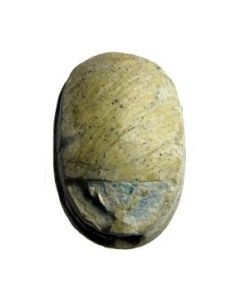 Kanaanitischer Skarabäus
Kanaanitischer SkarabäusTypisches Siegel der späten Bronzezeit von der Levante. Hevorragender Zustand. 1550 v. Chr. bis 1200 v. Chr., aus Steatit, 17mm lang.
Price: on request Scarab with wishes
Scarab with wishesNice scarab made of dark steatite. The hieroglyphs could be read as New Year's wishes.
Price: on request Faience tile of the Djoser pyramid type
Faience tile of the Djoser pyramid typeEgyptian wall tile from the Old Kingdom, 2nd to 3rd dynasty. The tile type is known from the famous step pyramid of king Djoser.
Price: on request Fragment eines kanaanitisches Skarabäus Siegels
Fragment eines kanaanitisches Skarabäus SiegelsEtwa 3/4 eines Siegels und Amuletts aus Steatit, mittlere Bronzezeit, 1800 bis 1500 v.Chr., Levante. Unterseitige Symbolik zu 2/3 erhalten. Länge 8mm, Breite 6mm.
Price: on request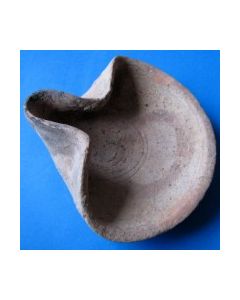 Kanaanitische Öllampe
Kanaanitische Öllampe1400 v.Chr. bis 1000 v.Chr., Späte Bronzezeit bis Eisenzeit I. Typische Lampe für die Levante, Terra cotta. Kleine Restauration, sonst perfekt erhalten. 150 mm lang, 160 mm breit.
Price: on request Gut erhaltenes kanaanitisches Skarabäus Siegel
Gut erhaltenes kanaanitisches Skarabäus SiegelSiegel und Amulett der mittleren Bronzezeit, 1800 bis 1500 v.Chr., Levante. Museale Oberseite. Hieroglyphen unterseitig bis auf kleine Ecke erhalten. Länge 15mm, Breite 12mm.
Price: on request Kanaanitisches Skarabäus Antilopensiegel aus Karneol
Kanaanitisches Skarabäus Antilopensiegel aus KarneolSiegel und Amulett der mittleren Bronzezeit, 1800 bis 1500 v.Chr., Levante. Vollständig erhaltene Antilopendarstellung unterseitig. Länge 13mm, Breite 8mm.
Price: on request Bronze Age axe head
Bronze Age axe headVery well preserved axe head. Late Bronze Age, 10th to 9th cent. BC.
Price: on request Bronze Age axe head
Bronze Age axe headVery well preserved axe head. Late Bronze Age, 10th to 9th cent. BC.
Price: on request Ram-headed pendant
Ram-headed pendantFinely polished stone shaped like a stylized ram head with spiral horns. Bronze Age amulet from the Middle East.
Price: on request Bronze Age axe head
Bronze Age axe headVery well preserved axe head. Late Bronze Age, 10th to 9th cent. BC.
Price: on request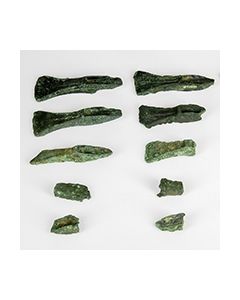 Bronze Age Axehead Hoard
Bronze Age Axehead HoardOriginal group dating to the Middle Bronze Age of Northern Europe. It was buried around 3400 years ago south of Chiddingford in Great Britain.
Price: on request Vorderasiatisches Rollsiegel
Vorderasiatisches RollsiegelAbrollung zeigt Bergziegen im oberen Register, unten Raubvögel und Pflanzen. Akkad-Zeit bis Ur III-Periode, vermutlich ab der Gutäer-Herrschaft.
Price: on request Ohrring aus Belutschistan, Indus-Kultur - Silber
Ohrring aus Belutschistan, Indus-Kultur - SilberSchlichte Formgebung. Spannendes, aus einem Edelmetall gefertigtes Belegstück aus der Frühzeit der Menschheitsgeschichte.
Price: on request Small bowl from the Lusatian culture
Small bowl from the Lusatian cultureKleines Schälchen aus grober Keramik. Möglicherweise Votivgabe oder Grabbeigabe für Kinder.
Price: on request Juglet from the Urnfield period
Juglet from the Urnfield periodSmall juglet dating to the transition period between Bronze Age and Iron Age in Central Europe. 1200 to 800 BC. Found in an urnfield in Lower Austria.
Price: on request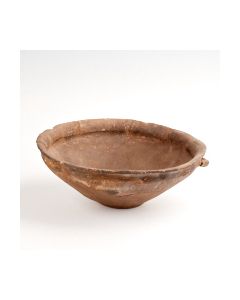 Big bowl from the Urnfield period
Big bowl from the Urnfield periodCeramic vessel dating to the transition period between Bronze Age and Iron Age in Central Europe. 1200 to 800 BC. Found in an urnfield in Lower Austria.
Price: on request

